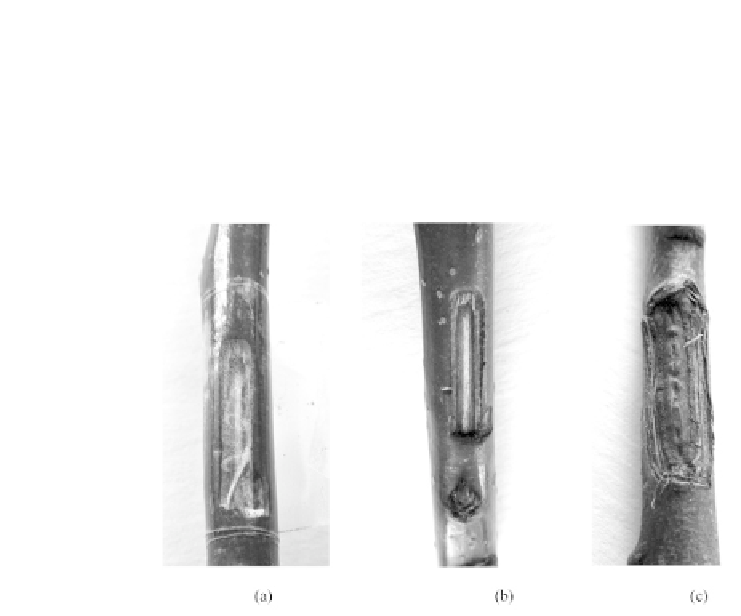Agriculture Reference
In-Depth Information
eration coeffi cient was adapted on a 9-point scale for the evaluation of regeneration
effi ciency [8, 10, 14]. The overgrowth of the wound was observed every decade with
the help of a magnifying glass. Compare the results used of a 9-point scale. The in-
tensity of callus genesis was estimated at 1 point, if callus formation did not occur or
its surface was less than 5 percent of the wound (Figure 15.3(b)). Objects with callus
areas equal to 85.5-100 percent were estimated at 9 points (Figure 15.3(c)).
FIGURE 15.3
Estimation of the wound overgrowing: (a)—wound covered with transparent
scotch-tape to avoid infection and withering; (b)—surface of callus occupies less than 5% of the
wound (1 point); (c)—surface of callus occupies 85.5-100% of the wound (9 points).
Regeneration coeffi cient was calculated in units of regeneration coeffi cient (urc)
according to O.A. Opalko's equation [8, 14]:
2
S
=
+
where
R
—regeneration coefficient, urc;
S
—intensity of callus genesis, points;
n
1
—number of days after notching was done to the appearance of the first signs of
callus;
n
2
—number of days after notching was done to the completion or termination of callus
development.
The statistical processing of the experimental data was carried out by the methods
of R.A. Fisher [18]. To calculate precipitation amount and air temperature sums, the
data of Uman meteorological station were used. The hydrothermal coeffi cient of G.G.
Selyaninov [19] was calculated using the formula:
R
,
nn
1
2
=
å
å
Q
HTC
0.1
T
'

















Search WWH ::

Custom Search